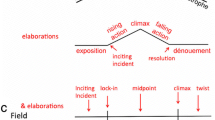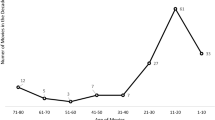Abstract
This article explores the Japanese animated films of Hayao Miyazaki and Studio Ghibli, which are outstanding contributions to contemporary popular culture. It describes their representation of developmental experiences of children and adolescents and compares them with work in the British and American traditions of children's fiction. It deploys psychoanalytic perspectives to suggest that one of their many admirable qualities is their sensitivity to the unconscious anxieties of normal children. While the films belong broadly in the genre of fantasy, they nevertheless convey a subtle awareness of social differences and changes. Their traditional method of hand-drawn animation is shown to make possible a great diversity and delicacy of visual representation. The films provide many beautiful animated representations of natural, man-made, and imagined environments and express deep concerns. After an overview of Miyazaki's work, the article gives a more detailed consideration of Our Neighbour Totoro, Ponyo, and Porco Rosso.
Similar content being viewed by others
Notes
Our renewed interest in fiction and films for children, and especially very young children, owes much to our four grandchildren, Gloria (5), Madeleine (4), Rosemary (2), and Gilbert (1), whose enjoyment we have been able to share.
On the DVD of Ponyo, Miyazaki is seen late at night, drawing picture credits for the 420 members of the production team, which appear as beautiful pictograms as the credits roll.
On an earlier connection between an artisanal animation technology and anti-materialist values see Esther Leslie (1997).
In a DVD-interview, Miyazaki mentions his doubt about putting eyes on the waves. Wondering if this would be going too far, he sought advice from colleagues, who said do it! Miyazaki's boldness in going wherever his imagination leads him is part of his greatness. Spirited Away, set in an exotic bathhouse, is his most extraordinary creation, and is perhaps the most Japanese of his films in its connotations. See Osmond (2008); and on Studio Ghibli more generally, Odell and Le Blanc (2009).
Miyazaki's films have outstanding scores, the outcome of a career-long collaboration with composer Joe Hisaishi.
The dialogue and the voice-acting in this film are particularly fine. Its genre is well suited to English-language voice-over, as if American English were its natural tongue. We have not seen the Japanese-language versions of these films.
References
Eco, E. (1985) Reflections on the Name of the Rose. London: Secker and Warburg.
Freud, S. (1917, 1957) Mourning and melancholia. Standard Edition, 14. London: Hogarth Press, pp. 243–259.
Leslie, E. (1997) Wallace and Gromit: An animating love. Soundings 5 (spring): 149–156.
Miyazaki, H. (1996) Starting Point 1979–1996. San Francisco: Viz Media.
Odell, C. and Le Blanc, M. (2009) Studio Ghibli: The Films of Hayao Miyazaki and Iseo Takahata. Harpenden: Kamera Books.
Osmond, A. (2008) Spirited Away. London: BFI Film Classics.
Rustin, M.E. (1999) Multiple families in mind. Clinical Child Psychology and Child Psychiatry 4 (1): 51–62.
Rustin, M.E. and Rustin, M.J. (2001) Narratives of Love and Loss: Studies in Modern Children's Fiction, 2nd edn. London: Karnac Books.
Rustin, M.E. and Rustin, M.J. (2003) Where is home?; A new kind of friendship; Learning how to say goodbye: Essays on Philip Pullman's. His Dark Materials. Journal of Child Psychotherapy 29 (1–3): 227–242, 415–428.
Author information
Authors and Affiliations
Corresponding author
Rights and permissions
About this article
Cite this article
Rustin, M., Rustin, M. Fantasy and reality in Miyazaki's animated world. Psychoanal Cult Soc 17, 169–184 (2012). https://doi.org/10.1057/pcs.2012.21
Published:
Issue Date:
DOI: https://doi.org/10.1057/pcs.2012.21




